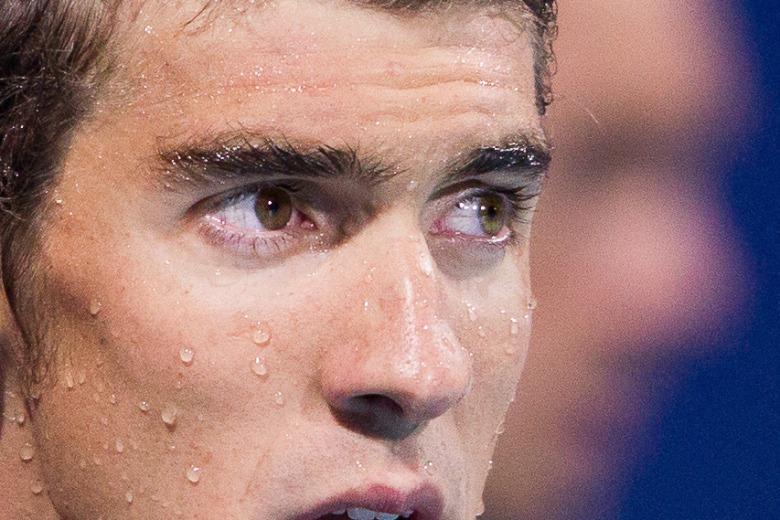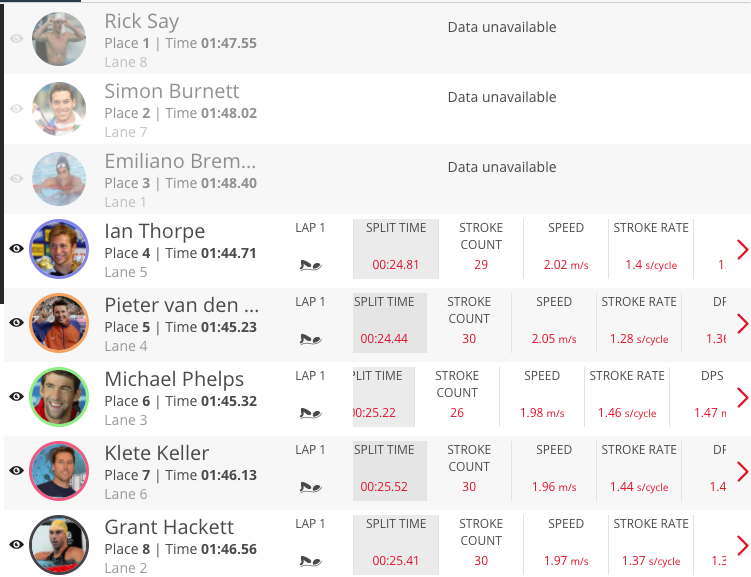By the time the Olympics came to Athens in 2004, Ian Thorpe and Pieter van den Hoogenband were already legends in the global swimming community. Their 200 freestyle rivalry had been established four years previously in Sydney, when the Dutchman defeated Thorpe in his own backyard in world-record fashion. In those same 2000 Games, Michael Phelps was a relatively unknown 15-year-old butterflyer, but he quickly rose to fame as one of the fastest swimmers in the world in multiple disciplines.
When news broke that all three of these stars – the Australian world-record holder and world champion, the Dutch former world-record holder and defending Olympic champion, and the up-and-coming American phenomenon – would face off in Athens, the hype for the men’s 200 freestyle grew exponentially. With speculation about Phelps’ potential fueling the excitement, the race became more than just a rematch between Thorpe and van den Hoogenband. It was a showdown spanning three continents and two eras. Indeed, the media labelled it the “Race of the Century.”
On August 17, after advancing comfortably through the prelims and semifinals the day prior, the three challengers dove in for the final in the middle lanes of the pool. The first 100 meters belonged to van den Hoogenband, who out-split his competitors on each length. He turned in a blistering 50.42, which was more than a second under world-record pace. However, his distance per stroke (DPS) was lower than Thorpe’s – on the second length, Thorpe travelled 0.06 m further with every pull. Their stroke index metrics indicate that van den Hoogenband was consistently less efficient than his Australian competitor, and this extra energy expenditure over the duration of the race would cost the Dutchman in the end.
Thorpe closed the gap considerably on the third length, splitting 0.42 seconds faster than van den Hoogenband. While van den Hoogenband averaged a longer amount of time on his first three underwaters, Thorpe crushed him off the final wall, with an additional 0.59 seconds of propulsive dolphin kicks. This marked the turning point in the race. Thorpe surged ahead and out-split van den Hoogenband by 0.72 seconds on the last 50, touching the wall in an Olympic-record time of 1:44.71. Conserving his energy on the first half of the race paid off.
Although Phelps was stuck in third position for the entirety of the race, he spent far longer underwater than his competitors and had the fastest split on the last 50 with a stroke index similar to Thorpe’s. This momentous finish is perhaps symbolic of the fact that his career was on the rise.
There was never another showdown between Thorpe, van den Hoogenband, and Phelps after the 2004 Olympics. Considering the star-studded field and level of hype leading up to the race, the men’s 200 freestyle final in Athens stands as one of the most epic races in swimming history.
Tritonwear is a SwimSwam partner.



Phelps’ loping stroke looks like something age group coaches would beat out of their swimmers in 2002, and basically the model for coaches in 2018.
Thorpe s time would have won worlds 2019
Thorpe’s PB would have won every subsequent textile Worlds/Olympics, bar Phelps ’07 and Agnel ’12. It’s still the third quickest textile time after those two beastly swims, only Rapsys currently is close.
phenomenal
Unfortunately for Hackett this was the second straight Olympics he had to compete in while ill. He revealed afterwards he was swimming with a partially collapsed right lung (which explains why he looked sluggish in both the 200 and 4×200 relay). It’s a testament to how dominant he was in the distance races that he still won gold in the 1500 despite having only 75% lung capacity.
and Klete Keller – who swam like a monster on the anchor of the 800 free relay ( one of the best nail biting relay of all time as well ) to beat Thorpey by a few hundreds …..
Throw in the soon-to-be-fastest-of-all-time SCY 200 freestyler for good measure as part of the supporting cast (Burnett)
exactly …..that was a fabulous line-up back in the day
Nor Thorpe neither Phelps look like humans they are more like dolphins. Phelps underwater at 100 is rare, over 11 meters!
I think the category in the table for speed (shown in meters per second) is incorrect. I am sure that they were swimming much faster than 1.02-0.99 meters per second
About 1.9 m/s ?
That will be all of us when the pool opens & we’ll be very happy about it!
Hi Nick, great catch. There was a data entry issue in our model that caused the speeds, and a few other metrics, to display incorrectly.
We have corrected the error, so you can see the proper numbers at this link:
https://results.tritonwear.com/#/event/2004_Olympics_Mens200free.json
That full body suit was the difference 🙂
Other swimmers believed the full body suit was worst then the other suits because it was said to restrict shoulder movement because of how tight the suit was around the shoulders which is why no one else used it. Thorpe only wore the suit because of sponsorships that paid him to wear it and the suit was textile so it was just like the other suits for his era.
If memory serves me right, at the time of the race, PvdH, Thorpe, Hackett, and Phelps held 8 of the 17 men’s individual LCM WRs between them; or, to put it another way, those four held only one less WR than the Earth’s other 3 billion men combined.
PVDH – 100 free
Thorpe – 200, 400, 800 free
Hackett – 1500 free
Phelps – 200 fly, 200, 400 IM
7/14 Olympic individual pool events.
Correction, 7/13, as at the time 800 wasn’t an Olympic event.
After Athens Olympics, there were only eight individual male Olympic event WR holders (Popov, Hansen, Piersol, Crocker).
After Beijing, there were only seven (Sullivan x2, Phelps x4, Thorpe, Hackett, Kitajima x2, Piersol x2, Crocker).
Now, excluding the 800, there are twelve (Cielo x2, Biedermann, Thorpe, Sun, Peaty, Chupkhov, Murphy, Piersol, Dressel, Milak, Lochte, Phelps).
On the women’s side now, excluding the 1500, there are currently eight individual WR holders (Sjostrom x3, Pellegrini, Ledecky x2, King, Pedersen, Smith x2, Liu, Hosszu x2).
So in terms of number of WR held, the closest approximation to the race of the century would still be the 200 free, with Sjostrom, Ledecky,… Read more »
Thorpe has the ” In a brief without fast suit ” 400 free WR
Thorpe has the WR in my heart.